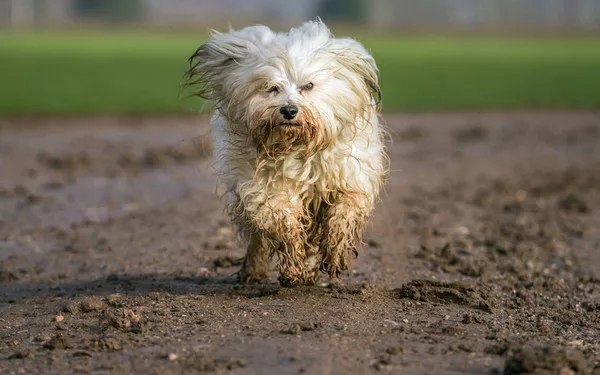Tibetan Mastiffs are an ancient and majestic breed, known for their impressive size, thick fur, and guardian instincts. Originating from the Himalayan region, these dogs have been bred for centuries to guard livestock and property in harsh mountainous terrain and extreme weather conditions. While their heritage might suggest a rugged aversion to water, the reality of Tibetan Mastiffs’ relationship with water is more nuanced. In this article, we will explore the various factors influencing their interaction with water, dispel common myths, and provide insights into how to encourage positive water experiences for these magnificent animals.
Historical Context: Adaptation to Harsh Environments
To understand Tibetan Mastiffs’ relationship with water, it’s essential to delve into their historical context. Originating in Tibet, these dogs were bred by nomadic tribes to protect their herds from predators like wolves, leopards, and bears. The harsh environment of the Himalayas, characterized by freezing temperatures and sparse resources, shaped the breed’s characteristics, including their thick double coat and independent nature.
Water, in the form of snow and ice, is abundant in the Tibetan plateau, but access to liquid water may be limited. Tibetan Mastiffs evolved in an environment where water sources were often frozen or scarce, leading to a perception that they are not fond of water. However, this adaptation doesn’t imply an inherent dislike for water but rather a practical adaptation to their native environment.
Individual Variability: Personality and Temperament
Like all dog breeds, Tibetan Mastiffs exhibit individual personalities and temperaments shaped by genetics, socialization, and life experiences. While some Tibetan Mastiffs may display a natural aversion to water, others may show curiosity or even enthusiasm for aquatic activities.
Early socialization plays a crucial role in shaping a Tibetan Mastiff‘s attitudes towards water. Exposing them to water in a positive and controlled environment during puppyhood can help build confidence and familiarity. However, it’s essential to respect each dog‘s preferences and comfort levels, as forcing them into water can lead to fear or anxiety.
Physical Characteristics: Impact on Water Interaction
The physical attributes of Tibetan Mastiffs also influence their relationship with water. Their dense double coat serves as insulation against cold temperatures but can become heavy and waterlogged when wet. While this coat provides excellent protection in their native environment, it can pose challenges in water-related activities.
Additionally, Tibetan Mastiffs have large, heavy bodies and are not natural swimmers like some other breeds. Their size and weight may make swimming more challenging and require additional support and supervision, especially for inexperienced swimmers. However, with proper guidance and encouragement, many Tibetan Mastiffs can learn to enjoy water activities safely.
Environmental Factors: Climate and Surroundings
The environment in which a Tibetan Mastiff is raised and lives can significantly influence their relationship with water. Dogs raised in arid regions with limited access to water may have less exposure and familiarity with aquatic environments compared to those raised in areas with abundant water sources.
Similarly, climate plays a significant role, as Tibetan Mastiffs are more likely to enjoy water activities in warmer weather. Cold temperatures can be uncomfortable for them, especially when wet, and may discourage water-related play. Understanding these environmental factors can help owners create appropriate opportunities for water interaction based on their dog’s preferences and comfort.
Activities to Encourage Water Interaction
While Tibetan Mastiffs may not inherently gravitate towards water like some water-loving breeds, there are various activities and strategies to encourage positive water experiences:
Gradual Introduction: Start by introducing water in a controlled and positive manner, such as shallow pools or calm lakes. Allow the dog to explore at their own pace and provide plenty of praise and rewards for calm and confident behavior.
See Also:7 Breeds Similar to the Majestic Tibetan Mastiff
Water Games: Engage in gentle water games such as retrieving floating toys or playing in shallow water. Keep the activities fun and low-pressure, focusing on building trust and confidence.
Water Therapy: Consider water therapy options such as hydrotherapy or swimming sessions, especially beneficial for older or arthritic Tibetan Mastiffs. These activities provide low-impact exercise and can help improve mobility and muscle strength.
Supervised Swimming: If your Tibetan Mastiff shows interest in swimming, provide supervised sessions in a safe and controlled environment. Use flotation devices if necessary, especially for inexperienced swimmers or those with buoyancy challenges due to their size.
Positive Reinforcement: Always use positive reinforcement techniques such as treats, praise, and affection to reinforce desired behaviors around water. Avoid punishment or coercion, as this can lead to fear and anxiety.
Conclusion
In conclusion, Tibetan Mastiffs’ relationship with water is influenced by a combination of factors, including their historical adaptation, individual temperament, physical characteristics, and environmental influences. While they may not inherently possess a love for water like some breeds, many Tibetan Mastiffs can learn to enjoy aquatic activities with patience, positive reinforcement, and proper guidance. Understanding and respecting each dog’s preferences and comfort levels is key to fostering a positive and enriching experience with water for these magnificent animals.
Related Topics:
10 Breeding Challenges of Tibetan Mastiffs
What Color of Tibetan Mastiff Is Rare?
What Does Tibetan Mastiff Eat?


























